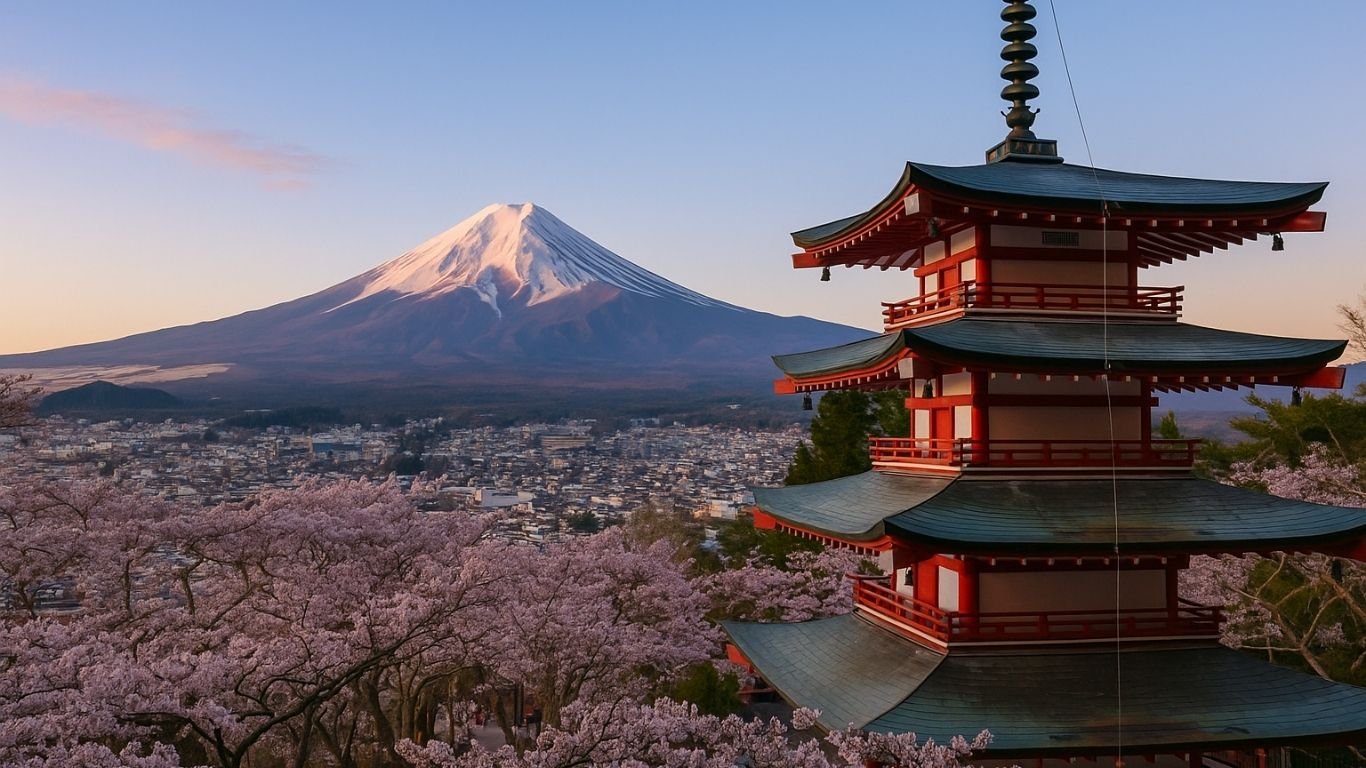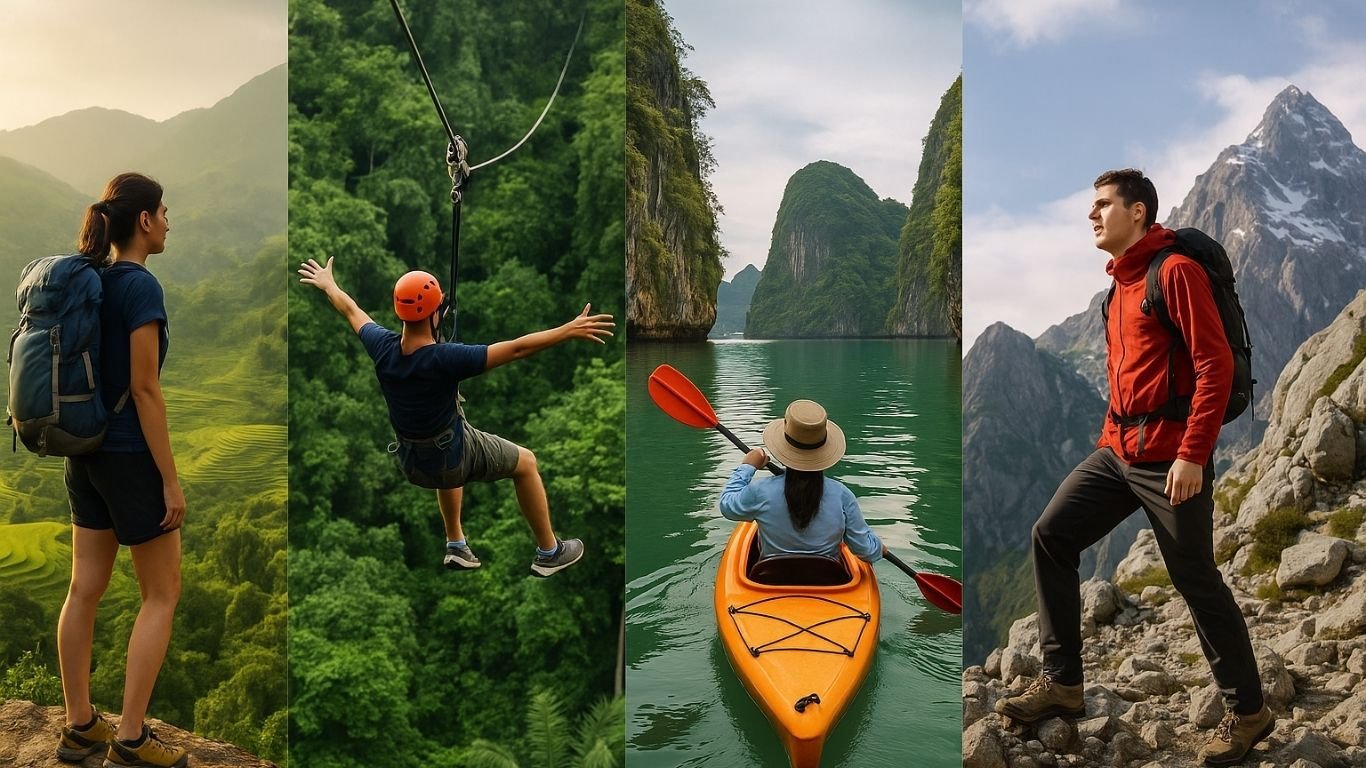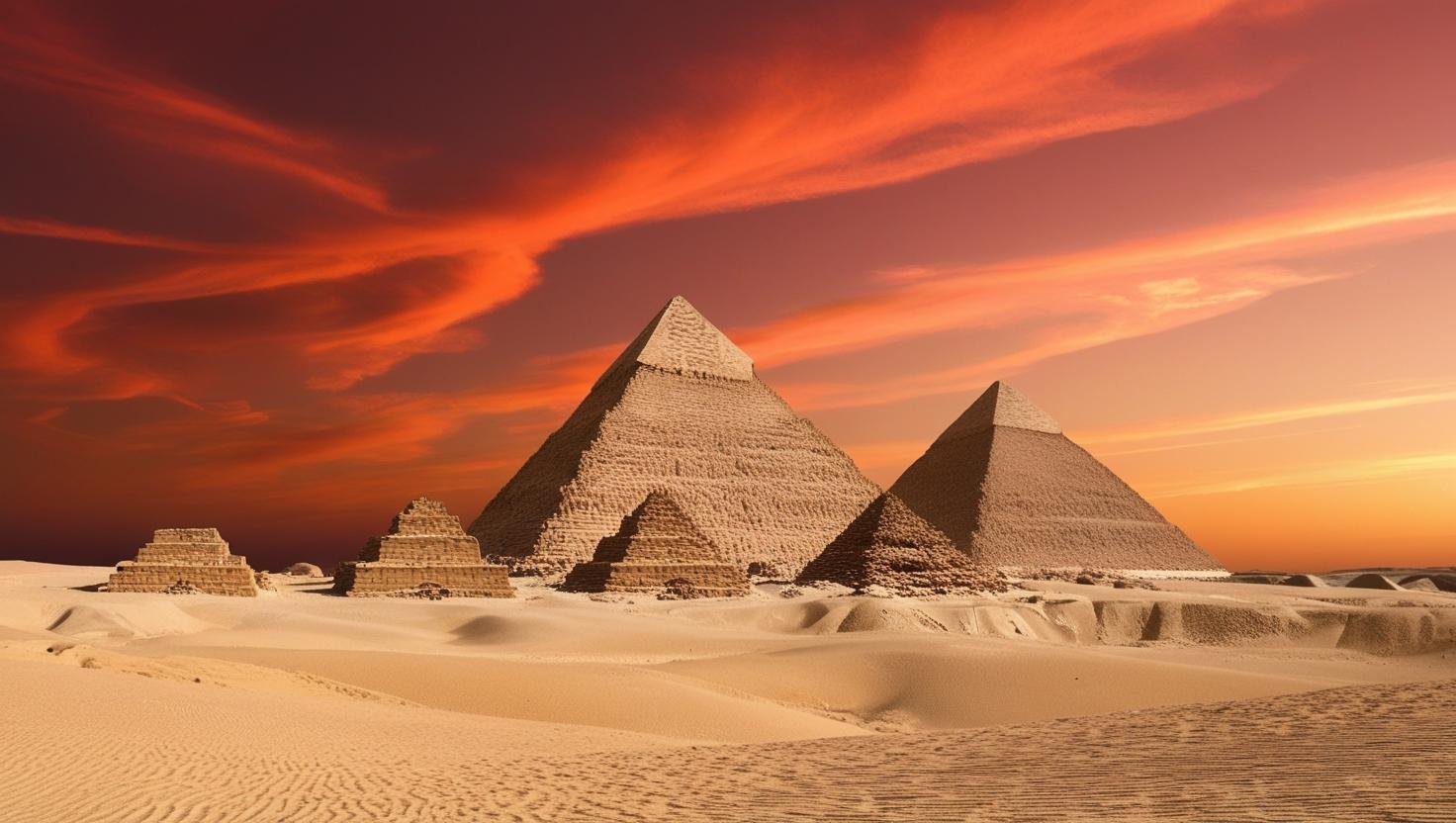Japan is a country where timeless traditions meet dazzling innovation, and no better way to experience this harmony exists than through its cities. From the neon-lit streets of Tokyo to the sacred deer parks of Nara, each destination offers a distinct chapter in the nation’s cultural narrative. The best cities to visit in Japan are more than just travel stops—they are gateways into ancient temples, culinary revolutions, artistic movements, and moments of breathtaking natural beauty.
Whether you’re drawn by history, cuisine, urban exploration, or spiritual discovery, these 10 cities will introduce you to the full spectrum of what Japan has to offer. Each has been selected not just for their fame, but for the unique experiences and authentic insights they provide into Japanese life—past and present.
Table of Contents
1. Tokyo
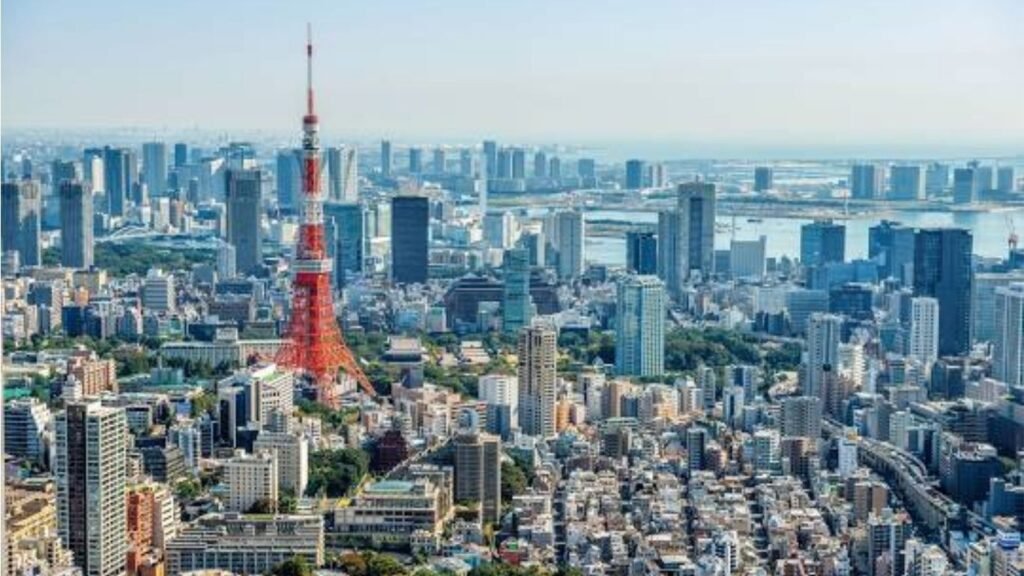
History and Culture
Tokyo, Japan’s dazzling capital, is where time-honored tradition meets hyper-modern living. Formerly known as Edo, Tokyo rose to prominence during the Tokugawa shogunate and became the imperial capital in 1868. Today, it stands as a global metropolis with deep cultural roots visible in its shrines, gardens, and neighborhoods like Asakusa and Yanaka. From tea ceremonies to pop culture, Tokyo encapsulates the spirit of transformation and continuity.
As one of the best cities to visit in Japan, Tokyo is a city of layered contrasts—where ancient customs still breathe beneath the rhythm of a futuristic skyline.
Must-See Attractions
Explore iconic sights and experiences that make Tokyo one of the best cities to visit in Japan:
- Senso-ji Temple, Asakusa: Tokyo’s oldest temple, founded in the 7th century, draws visitors with its vivid lanterns, pagoda, and traditional Nakamise shopping street.
- Tokyo Skytree: Soaring 634 meters, this tower offers panoramic views over the city and even Mt. Fuji on clear days.
- Meiji Shrine: A peaceful oasis near Harajuku, this Shinto shrine honors Emperor Meiji and Empress Shoken.
- Shibuya Crossing: The world’s busiest pedestrian intersection, surrounded by neon lights, shopping hubs, and youth culture.
- Tsukiji Outer Market: Dive into Tokyo’s culinary scene with fresh seafood, street snacks, and traditional ingredients.
- Imperial Palace & East Gardens: The residence of Japan’s Emperor, surrounded by meticulously kept gardens and historical relics.
- Odaiba: A futuristic entertainment and shopping hub on Tokyo Bay, with attractions like teamLab Borderless and a giant Gundam statue.
- Ueno Park & Museums: A cultural hub with the Tokyo National Museum, Ueno Zoo, and cherry blossoms in spring.
- Akihabara: Tokyo’s tech and anime capital, known for electronics, manga stores, and otaku culture.
- Roppongi Hills: Art museums, upscale dining, and Tokyo Tower views define this trendy international district.
Unique Experiences
| Experience Type | Description |
|---|---|
| High-Tech Culture | Explore robotics museums, VR gaming arcades, and digital art collectives. |
| Traditional Tokyo | Attend a kabuki performance or join a calligraphy workshop in historic districts. |
| Culinary Adventures | Taste Michelin-starred sushi or join a street food tour through local izakayas. |
| Nature in the City | Visit Rikugien Garden or take a boat ride along the Sumida River during cherry blossom season. |
Best Time to Visit & Transportation
The best time to explore Tokyo is during spring (March to May) and autumn (September to November), when the city is at its most scenic with cherry blossoms or fall foliage. Summers can be humid, while winters are cool and clear.
As one of the best cities to visit in Japan, Tokyo offers a world-class transportation network. The JR Yamanote Line, Tokyo Metro, and extensive bus routes make getting around seamless. Trains to other major Japanese cities depart from hubs like Tokyo Station and Shinjuku.
2. Kyoto
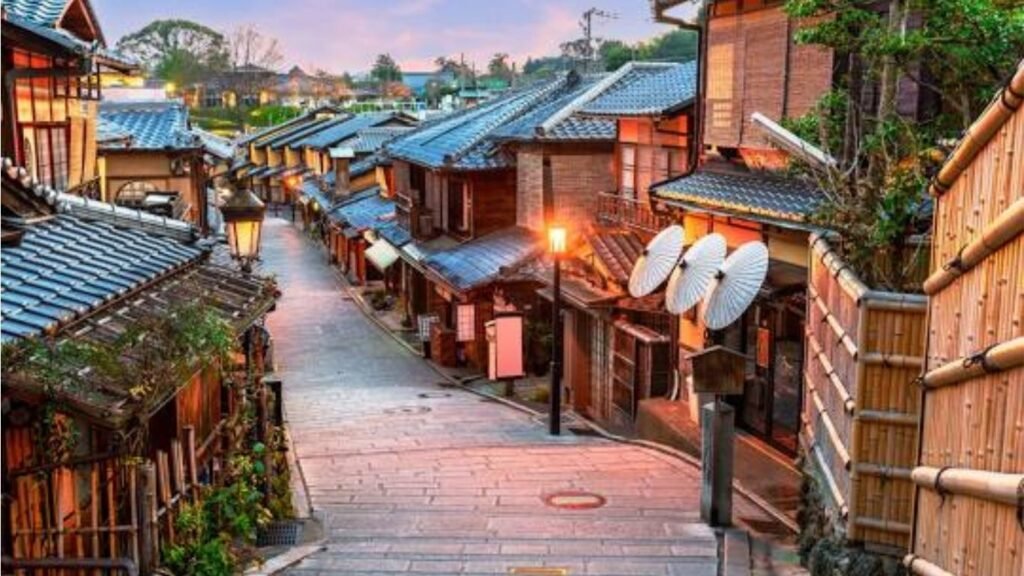
History and Culture
Once the imperial capital of Japan for over a thousand years, Kyoto remains the spiritual and cultural heart of the nation. Known for its classical architecture, Zen temples, geisha traditions, and seasonal beauty, Kyoto is where Japan’s soul truly shines. With more than 1,600 Buddhist temples and hundreds of Shinto shrines, it’s a living museum of Japanese heritage.
As one of the best cities to visit in Japan, Kyoto offers a timeless atmosphere where tea houses, wooden machiya townhouses, and kimono-clad locals preserve traditions passed down through generations.
Must-See Attractions
Explore the top cultural landmarks that make Kyoto one of the best cities to visit in Japan:
- Fushimi Inari Taisha: Iconic for its thousands of vibrant red torii gates that wind through the forested hillside.
- Kinkaku-ji (Golden Pavilion): A Zen temple covered in gold leaf, reflected in a serene mirror pond.
- Gion District: Kyoto’s famous geisha quarter, known for teahouses, narrow alleys, and traditional arts.
- Arashiyama Bamboo Grove: A surreal walkway surrounded by towering bamboo stalks and scenic mountain views.
- Kiyomizu-dera Temple: Perched on a hillside with sweeping views over Kyoto, this UNESCO site is a marvel of wooden architecture.
- Philosopher’s Path: A tranquil canal-side trail lined with cherry trees and small temples.
- Nijo Castle: A former shogun residence with ornate interiors, beautiful gardens, and the famous “nightingale floors.”
- Nishiki Market: Known as “Kyoto’s Kitchen,” offering local delicacies, pickles, and handmade sweets.
- Heian Shrine: With its massive torii gate and spacious gardens, this shrine pays tribute to Kyoto’s imperial past.
- To-ji Temple: Home to Japan’s tallest wooden pagoda and a popular antique market.
Unique Experiences
| Experience Type | Description |
|---|---|
| Zen & Mindfulness | Join a zazen meditation session or visit temple gardens designed for contemplation. |
| Traditional Arts | Try your hand at tea ceremonies, ikebana (flower arrangement), or kimono dressing. |
| Seasonal Festivals | Witness Kyoto’s iconic Gion Matsuri in summer or experience hanami during cherry blossom season. |
| Historical Stays | Spend the night in a traditional ryokan with tatami mats and kaiseki dining. |
Best Time to Visit & Transportation
Kyoto is one of the best cities to visit in Japan during the spring (late March to April) and autumn (October to November), when cherry blossoms and maple leaves enhance the city’s picturesque landscapes. Summers are warm and festive, while winters offer quiet serenity and clear views of snow-dusted temples.
Getting around Kyoto is easy with its network of buses, subways, and rental bikes. While compact compared to Tokyo, Kyoto is well-connected to major cities by the Shinkansen from Kyoto Station.
3. Osaka
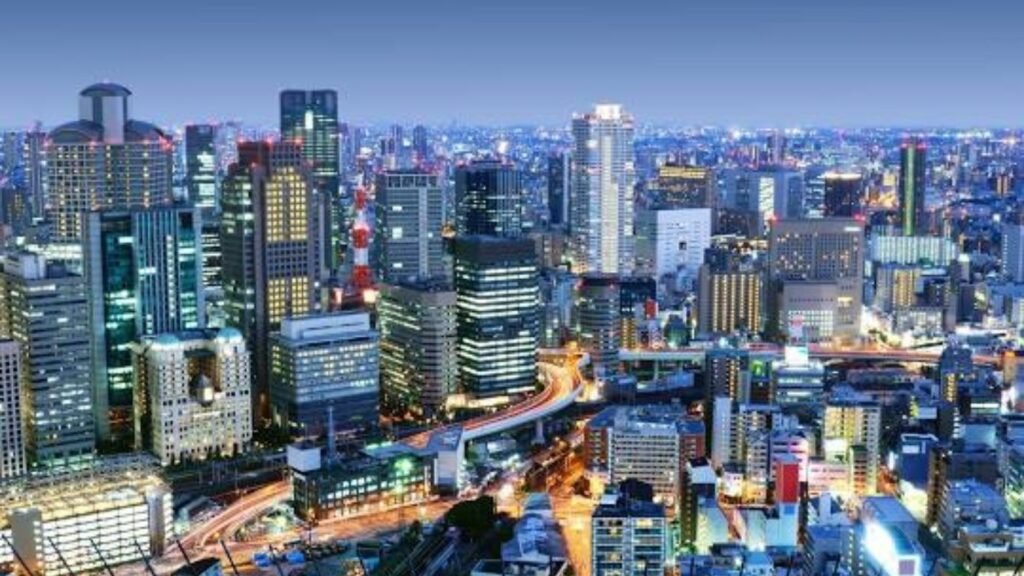
History and Culture
Known as the “Nation’s Kitchen,” Osaka is a lively port city with a rich mercantile history and a reputation for humor, food, and friendliness. Once a crucial hub during the Edo period for rice trade and commerce, Osaka has grown into Japan’s third-largest city while preserving its down-to-earth charm. From ancient temples to cutting-edge entertainment districts, Osaka pulses with energy.
As one of the best cities to visit in Japan, Osaka offers a unique mix of history and modernity, where neon streetscapes blend seamlessly with castle walls and culinary markets.
Must-See Attractions
Discover the attractions that make Osaka one of the best cities to visit in Japan:
- Osaka Castle: A historic landmark with a dramatic stone base and sweeping views from its main tower.
- Dotonbori: The heart of Osaka nightlife, famous for its glowing billboards, canal cruises, and endless street food stalls.
- Shitenno-ji Temple: Founded in 593, this is Japan’s oldest officially administered temple and a symbol of Osaka’s Buddhist roots.
- Kuromon Ichiba Market: A paradise for food lovers, featuring takoyaki, fresh sushi, grilled crab, and wagyu beef skewers.
- Umeda Sky Building: A futuristic skyscraper with a floating garden observatory offering panoramic city views.
- Sumiyoshi Taisha: One of Japan’s oldest Shinto shrines, known for its distinctive architectural style and red arched bridge.
- Tennoji Zoo & Park: A relaxing green space that also houses cultural sites and Osaka’s municipal museum of fine art.
- Abeno Harukas: Japan’s tallest skyscraper, with an observation deck, art museum, and upscale shopping.
- Osaka Aquarium Kaiyukan: One of the world’s largest aquariums, showcasing marine life from the Pacific Rim.
- America Mura (American Village): A youth-culture hotspot with quirky shops, street fashion, and indie art galleries.
Unique Experiences
| Experience Type | Description |
|---|---|
| Street Food Paradise | Indulge in iconic Osaka bites like okonomiyaki, takoyaki, and kushikatsu at local markets. |
| Comedy & Culture | Experience manzai comedy shows or visit the Kamigata Ukiyo-e Museum. |
| Nightlife Energy | Explore the vibrant alleys of Namba and the retro vibe of Shinsekai. |
| Boat Tours & Canals | Take a river cruise through Dotonbori and see Osaka from a different angle. |
Best Time to Visit & Transportation
Spring and autumn are the most pleasant times to visit Osaka, with cherry blossoms in April and crisp, colorful leaves in November. Summer festivals like Tenjin Matsuri light up the city with fireworks and traditional flair.
Osaka’s extensive subway system and JR lines make city travel effortless. It’s also a gateway to nearby cities like Kyoto and Nara, connected via rapid trains from Shin-Osaka Station—another reason it ranks among the best cities to visit in Japan.
4. Hiroshima
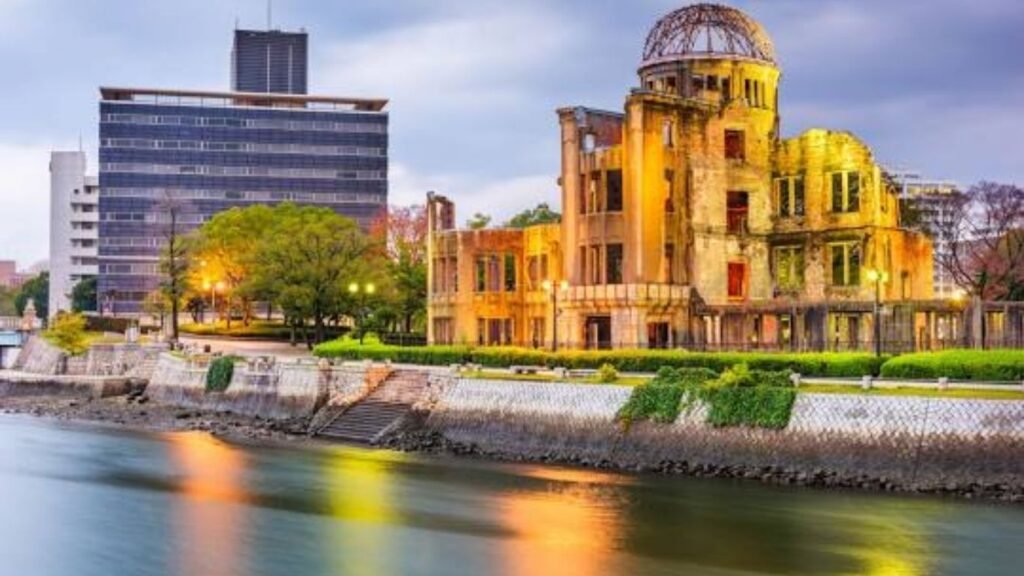
History and Culture
Hiroshima stands as a profound symbol of resilience and peace. Known globally for its tragic past, the city has transformed into a beacon of hope and remembrance. Once a bustling castle town and military center, Hiroshima was forever changed by the events of August 6, 1945. Today, it is a vibrant, green-lined city that honors its history while embracing modern life.
As one of the best cities to visit in Japan, Hiroshima offers a moving journey through its past alongside scenic beauty, cultural depth, and warm local spirit.
Must-See Attractions
Explore the landmarks and memorials that make Hiroshima one of the best cities to visit in Japan:
- Hiroshima Peace Memorial Park: A vast, contemplative space featuring the Atomic Bomb Dome, Peace Flame, and Peace Memorial Museum.
- Miyajima Island (Itsukushima Shrine): Just a ferry ride away, this UNESCO site features a floating torii gate and deer-roamed trails.
- Hiroshima Castle: A reconstructed landmark set in a tranquil park, showcasing samurai heritage and city history.
- Shukkeien Garden: A meticulously landscaped Edo-period garden with ponds, bridges, and tea houses.
- Okonomimura: A multi-floor food theme park dedicated to Hiroshima-style okonomiyaki, a savory pancake unique to the region.
- Hondori Shopping Arcade: A lively pedestrian street lined with fashion boutiques, cafés, and souvenir shops.
- Mazda Museum: Learn about Hiroshima’s industrial legacy through this auto manufacturer’s guided factory tours.
- Mitaki-dera Temple: A hidden gem in the forested hills, known for its pagoda, waterfalls, and fall foliage.
- Hijiyama Park & Contemporary Art Museum: A peaceful hilltop with panoramic views and avant-garde exhibits.
- Hiroshima Orizuru Tower: Offers views of the Peace Park and the opportunity to fold and release your own origami crane.
Unique Experiences
| Experience Type | Description |
|---|---|
| Peace Education | Engage with Hiroshima’s message of peace through museums and survivor testimonies. |
| Island Excursions | Explore Miyajima’s hiking trails, temples, and traditional ryokan stays. |
| Regional Cuisine | Taste Hiroshima-style okonomiyaki and fresh oysters from the Seto Inland Sea. |
| Spiritual Retreats | Visit ancient hillside temples and partake in quiet forest walks. |
Best Time to Visit & Transportation
Spring and autumn are the best times to explore Hiroshima, with cherry blossoms brightening Peace Park in April and colorful foliage adorning temple grounds in November. Summers are warm but full of festivals, while winters are quiet and reflective.
Hiroshima is one of the best cities to visit in Japan thanks to its accessibility via the Sanyo Shinkansen line. Within the city, an efficient streetcar (tram) network connects major attractions, while ferries to Miyajima offer scenic escapes.
5. Sapporo
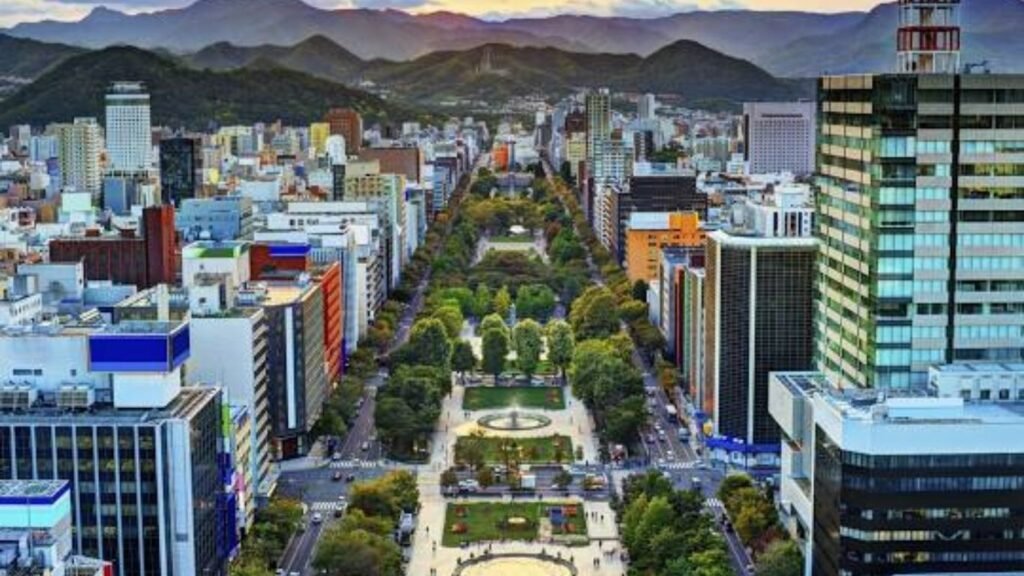
History and Culture
Sapporo, the capital of Hokkaido, is a city defined by wide boulevards, snowy winters, and a spirit of innovation. Unlike other ancient cities in Japan, Sapporo was established in the late 19th century during the Meiji era, designed with Western-style urban planning and built as a frontier city. Despite its relatively young age, it has developed a rich cultural identity—combining indigenous Ainu traditions, beer brewing heritage, and winter sports prestige.
As one of the best cities to visit in Japan, Sapporo offers a unique northern flavor—distinct in cuisine, culture, and scenery from anywhere else in the country.
Must-See Attractions
Experience the beauty and variety that make Sapporo one of the best cities to visit in Japan:
- Odori Park: A green belt cutting through the city center, home to the famous Sapporo Snow Festival and seasonal flower displays.
- Sapporo Beer Museum: Learn about Japan’s oldest beer brand in this historic red-brick brewery complex, complete with tastings.
- Mount Moiwa: Ride the ropeway for sweeping views over the city, especially dazzling at night.
- Historic Village of Hokkaido: An open-air museum that re-creates Meiji-era life with relocated and restored buildings.
- Susukino District: One of Japan’s largest entertainment quarters, alive with neon lights, ramen shops, and nightlife.
- Hokkaido Shrine: A sacred site dedicated to pioneering spirits and surrounded by serene forest paths.
- Moerenuma Park: A massive landscape-art park designed by artist Isamu Noguchi, blending sculpture with nature.
- Shiroi Koibito Park: A whimsical chocolate-themed park and factory, famous for Sapporo’s beloved white chocolate cookies.
- Nijo Market: A compact seafood market where you can sample fresh crab, sea urchin, and salmon roe bowls.
- Sapporo Clock Tower: An iconic Western-style building and symbol of the city’s frontier beginnings.
Unique Experiences
| Experience Type | Description |
|---|---|
| Winter Wonderland | Visit during the Snow Festival for ice sculptures, ski resorts, and snow-covered charm. |
| Culinary Specialties | Savor miso ramen, jingisukan (grilled lamb), and fresh Hokkaido dairy products. |
| Ainu Culture | Learn about the indigenous people of Hokkaido through local museums and cultural centers. |
| Seasonal Beauty | Enjoy vibrant lilac blooms in spring and vivid autumn foliage in Maruyama Park. |
Best Time to Visit & Transportation
The best time to visit Sapporo depends on your interests: winter (January–February) brings snow sports and festivals, while summer (June–August) offers cool escapes from Japan’s southern heat. Autumn is particularly colorful, and spring is brief but beautiful.
Sapporo is one of the best cities to visit in Japan due to its accessibility and compact design. The city is served by New Chitose Airport and an efficient subway system. Long-distance trains and buses connect it to scenic destinations across Hokkaido, including ski resorts and national parks.
6. Fukuoka
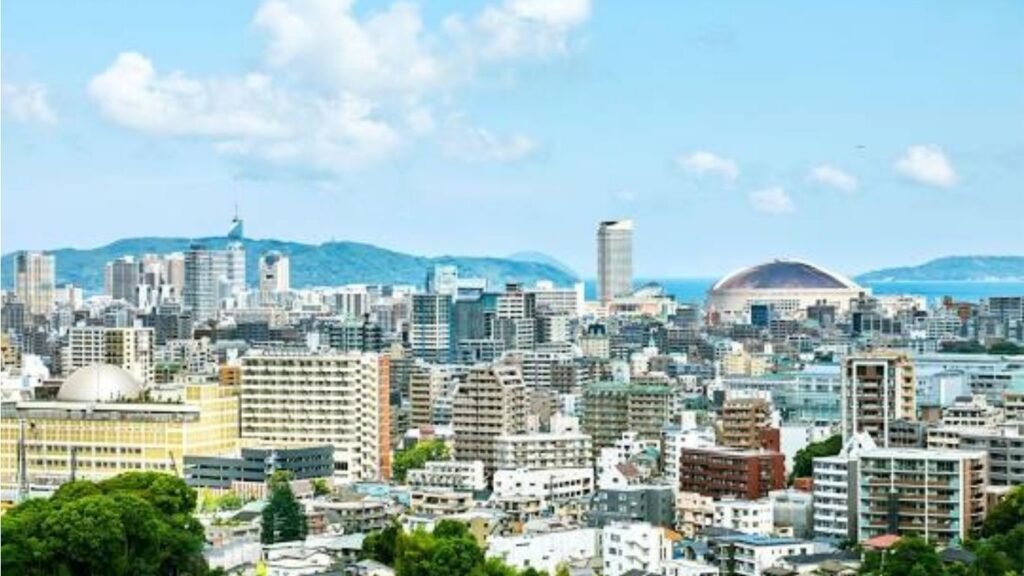
History and Culture
Located on the northern shore of Kyushu Island, Fukuoka is one of Japan’s oldest port cities and a long-standing gateway to continental Asia. Historically, it served as a cultural and commercial bridge between Japan, China, and Korea. Today, it’s a thriving modern metropolis with deep roots in samurai history, shrine traditions, and a laid-back lifestyle influenced by its coastal setting.
As one of the best cities to visit in Japan, Fukuoka offers a fusion of historical charm, seaside atmosphere, and a youthful energy that’s earned it a place among the country’s most livable cities.
Must-See Attractions
Discover why Fukuoka is considered one of the best cities to visit in Japan through its iconic landmarks and local gems:
- Ohori Park: A tranquil lakeside space perfect for walking, cycling, and enjoying traditional Japanese landscaping.
- Fukuoka Castle Ruins (Maizuru Park): Explore the remnants of a grand feudal fortress with cherry blossoms in spring.
- Canal City Hakata: A large shopping and entertainment complex with a canal running through its vibrant architecture.
- Kushida Shrine: A spiritual heart of the city and main site for the spectacular Hakata Gion Yamakasa Festival.
- Nanzoin Temple: Home to one of the world’s largest bronze reclining Buddha statues, nestled in lush hills outside the city.
- Hakata Machiya Folk Museum: Dive into traditional crafts, lifestyles, and the rich cultural heritage of the Hakata area.
- Momochi Seaside Park: A modern waterfront with a beach, cafes, and Fukuoka Tower offering stunning views of the coast.
- Tenjin Underground Shopping Mall: A sleek subterranean shopping arcade beneath one of the city’s busiest neighborhoods.
- Tocho-ji Temple: Houses Japan’s largest wooden seated Buddha and a haunting “hell and paradise” tunnel exhibit.
- Yanagibashi Market: A compact yet bustling market known for fresh seafood and regional specialties.
Unique Experiences
| Experience Type | Description |
|---|---|
| Street Food Stalls | Experience the iconic yatai stalls serving ramen, tempura, and local drinks on the sidewalks. |
| Cultural Gateway | Explore historic trade links with Korea and China through temples, cuisine, and artifacts. |
| Island Hopping | Take a ferry to Nokonoshima or Shikanoshima for beaches, flower parks, and hiking. |
| Festival Spirit | Join the high-energy Hakata Gion Yamakasa, one of Japan’s most thrilling summer events. |
Best Time to Visit & Transportation
Spring and autumn are the ideal seasons to visit Fukuoka, when mild weather enhances cherry blossom viewing or vibrant fall foliage. Summer is warm and festive, while winter is moderate and quieter.
Fukuoka is one of the best cities to visit in Japan for its easy access and smooth transit. Fukuoka Airport is just 10 minutes from the city center by subway, and the JR Hakata Station connects Kyushu to the rest of the country via the Shinkansen. Ferries also run to nearby islands and even to Busan, South Korea.
7. Nara
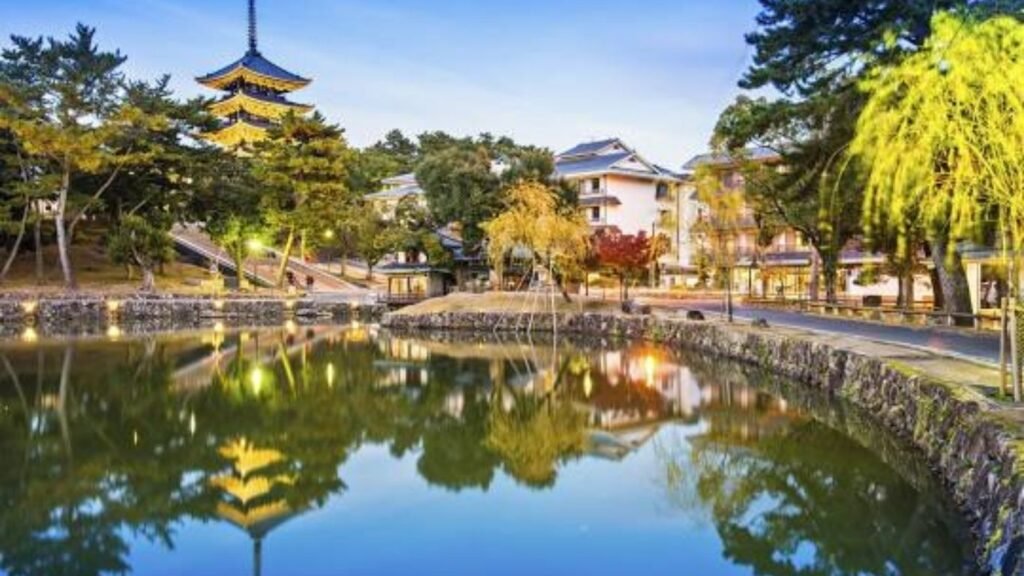
History and Culture
Nara, Japan’s first permanent capital, is a cradle of Japanese civilization and a sanctuary of ancient art, religion, and architecture. Established in the 8th century during the Nara period, the city introduced Buddhism as a dominant cultural force, shaping Japan’s spiritual and artistic identity. With UNESCO-listed temples, colossal statues, and roaming sacred deer, Nara feels like a living museum of Japan’s earliest chapters.
As one of the best cities to visit in Japan, Nara offers travelers an unforgettable glimpse into the country’s foundations—where spirituality, serenity, and heritage are preserved with care.
Must-See Attractions
Experience the sacred splendor that makes Nara one of the best cities to visit in Japan:
- Todai-ji Temple: Home to the Great Buddha (Daibutsu), this monumental wooden temple is one of Japan’s most revered religious sites.
- Nara Park: A vast public park where over 1,000 friendly, free-roaming deer are considered messengers of the gods.
- Kasuga Taisha Shrine: Known for its hundreds of bronze lanterns and atmospheric pathways, this Shinto shrine is deeply rooted in Nara’s history.
- Kofuku-ji Temple: A landmark five-story pagoda and museum housing Buddhist masterpieces.
- Naramachi: A historic merchant district with preserved machiya houses, traditional crafts, and sake breweries.
- Isuien Garden: A beautiful example of Japanese landscaping with borrowed scenery and serene tea houses.
- Yoshiki-en Garden: A quiet, lesser-known garden with moss, ponds, and a tea pavilion, ideal for peaceful strolls.
- Heijo Palace Site: Ruins of the imperial palace from the Nara period, now an archaeological park with reconstructed buildings.
- Mount Wakakusa: A short hike offering panoramic views of the city and the annual grass burning event (Yamayaki).
- Nara National Museum: Renowned for its extensive collection of Buddhist art, including statues, scrolls, and relics.
Unique Experiences
| Experience Type | Description |
|---|---|
| Sacred Encounters | Interact with the deer of Nara Park and offer them special rice crackers (shika senbei). |
| Pilgrimage Traditions | Visit ancient temples and follow historical paths once used by monks and nobles. |
| Zen and Garden Design | Experience meditative beauty in stone, moss, and water at Nara’s refined gardens. |
| Ancient Artifacts | Discover Japan’s early religious art and architecture at world-class heritage sites. |
Best Time to Visit & Transportation
Nara is best visited in spring or autumn, when cherry blossoms and colorful leaves frame the ancient temples and deer-filled parks. Summer is lush and vibrant, while winters offer quiet reflection among snow-dusted shrines.
As one of the best cities to visit in Japan, Nara is easily accessible from Kyoto and Osaka via local or express trains, taking less than an hour. Within the city, attractions are mostly walkable or reachable by convenient buses, making it perfect for a serene day trip or overnight escape.
8. Yokohama
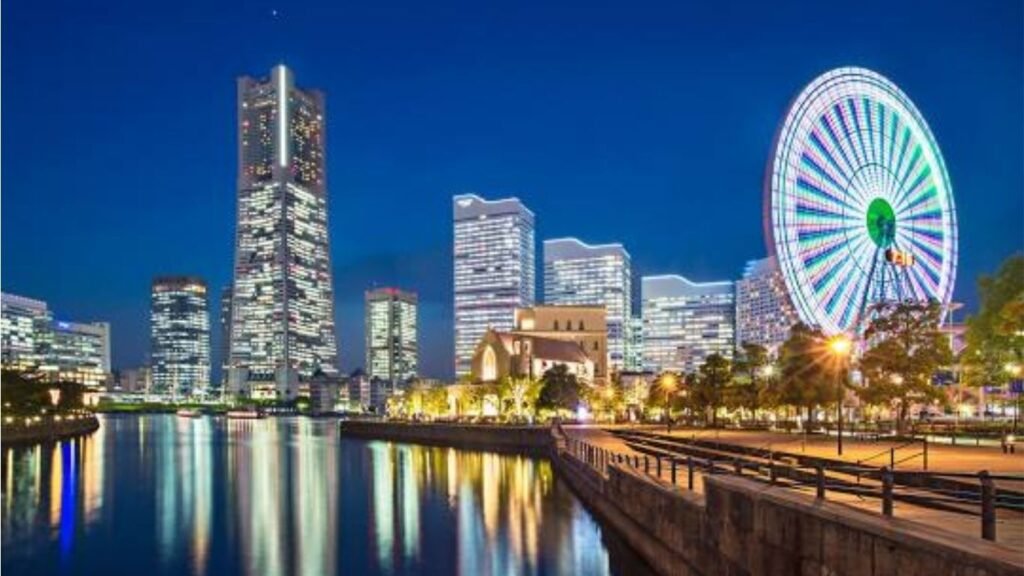
History and Culture
Yokohama, Japan’s second-largest city, is a cosmopolitan port town that played a pivotal role in opening the country to the outside world during the 19th century. With a rich international heritage, maritime identity, and modern skyline, Yokohama stands as a symbol of Japan’s fusion between global connection and local pride. From Victorian buildings and bayside promenades to dynamic art spaces, it offers a refreshing contrast to nearby Tokyo.
As one of the best cities to visit in Japan, Yokohama entices travelers with its harbor views, diverse neighborhoods, and laid-back sophistication.
Must-See Attractions
Explore the iconic sights and waterfront charm that make Yokohama one of the best cities to visit in Japan:
- Minato Mirai 21: A futuristic urban development on the bay, featuring the Cosmo World Ferris wheel, Landmark Tower, and shopping centers.
- Yokohama Chinatown: The largest Chinatown in Japan, brimming with colorful gates, temples, and authentic Chinese cuisine.
- Cup Noodles Museum: An interactive and quirky museum where you can create your own custom instant noodles.
- Sankeien Garden: A traditional Japanese garden with historic teahouses and buildings relocated from across Japan.
- Yokohama Red Brick Warehouse: Former customs buildings turned into trendy shops, restaurants, and event spaces on the waterfront.
- Yamashita Park: A scenic bayside park ideal for strolls, with views of the harbor and the Hikawa Maru ocean liner.
- Nippon Maru & Maritime Museum: A retired sailing ship and museum dedicated to Japan’s naval history.
- Nogeyama Zoo: A small, free zoo close to central Yokohama, perfect for families and casual visitors.
- Ramen Museum (Shin-Yokohama): A retro-themed indoor food park celebrating regional ramen from across Japan.
- Motomachi Shopping Street: A stylish area filled with boutiques, cafes, and European-inspired storefronts.
Unique Experiences
| Experience Type | Description |
|---|---|
| Port City Vibes | Walk the bayside promenades and enjoy open-air jazz performances and sea breezes. |
| Ramen Discovery | Sample ramen from all over Japan at the Shin-Yokohama Ramen Museum. |
| Cultural Fusion | Experience Yokohama’s global roots through cuisine, architecture, and festivals. |
| Skyline Views | Take in panoramic views from Landmark Tower or a harbor cruise. |
Best Time to Visit & Transportation
Yokohama is one of the best cities to visit in Japan year-round, thanks to its mild coastal climate. Spring and autumn are particularly scenic, while summer brings fireworks festivals and bustling seaside events.
Just 30 minutes from central Tokyo by train, Yokohama is easy to reach and explore. Its efficient rail and bus networks connect major districts, and walking along the waterfront is part of the charm. As a port of entry and a cultural bridge, it remains one of Japan’s most welcoming cities for international travelers.
9. Nagoya
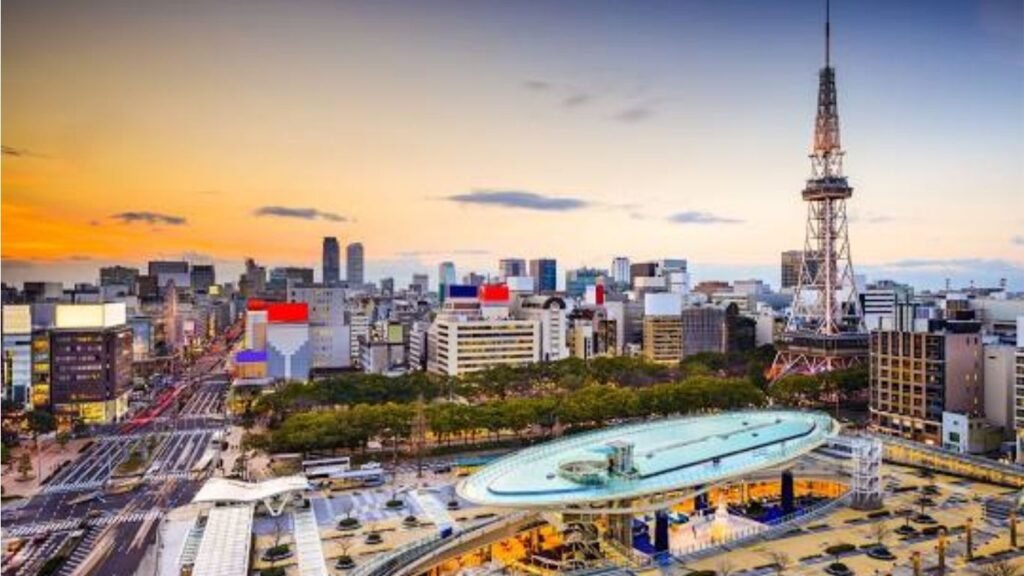
History and Culture
Strategically located between Tokyo and Osaka, Nagoya has long been a center of commerce, craftsmanship, and samurai legacy. As the birthplace of major feudal clans like the Tokugawa, it played a vital role in shaping Japan’s political and cultural landscape. Today, it thrives as a modern industrial powerhouse, home to cutting-edge manufacturing and deep-rooted traditions in ceramics, textiles, and architecture.
As one of the best cities to visit in Japan, Nagoya impresses with its balance of historical grandeur and contemporary innovation.
Must-See Attractions
Uncover the unique offerings that make Nagoya one of the best cities to visit in Japan:
- Nagoya Castle: A majestic symbol of Tokugawa authority, famed for its golden shachihoko (tiger-headed carp) and lush grounds.
- Atsuta Shrine: One of Japan’s most sacred Shinto shrines, home to the legendary Kusanagi sword—one of the Imperial Regalia.
- Osu Shopping District: A bustling mix of traditional shops, modern boutiques, and international street food.
- Toyota Commemorative Museum: A fascinating look at Japan’s industrial evolution, from textiles to automobiles.
- Nagoya City Science Museum: Featuring the world’s largest planetarium and hands-on exhibits for all ages.
- Tokugawa Art Museum: Showcasing samurai armor, scrolls, tea ceremony tools, and other heirlooms from the powerful Tokugawa clan.
- Shirotori Garden: A peaceful Japanese garden designed with flowing water paths and seasonal flora.
- SCMAGLEV and Railway Park: A must for train enthusiasts, highlighting Japan’s high-speed rail history and future maglev technology.
- Higashiyama Zoo and Botanical Gardens: A family-friendly space with animals, cherry trees, and panoramic city views from the Higashiyama Sky Tower.
- Sakae District: A neon-lit commercial hub with department stores, Nagoya TV Tower, and vibrant nightlife.
Unique Experiences
| Experience Type | Description |
|---|---|
| Samurai Heritage | Tour Nagoya Castle and explore Tokugawa-era history and artifacts. |
| Industrial Legacy | Dive into the evolution of Japanese innovation at Toyota-related museums. |
| Local Cuisine | Try Nagoya’s signature hitsumabushi (grilled eel over rice) and miso katsu (fried pork cutlet in red miso sauce). |
| Urban Exploration | Discover modern architecture, underground malls, and riverside promenades. |
Best Time to Visit & Transportation
Spring and autumn are ideal for visiting Nagoya, with cherry blossoms blooming at parks and temples in April and brilliant fall foliage in November. The summer sees lively festivals, while winter offers cozy culinary experiences.
As one of the best cities to visit in Japan, Nagoya is easily reached via the Tokaido Shinkansen and Chubu Centrair International Airport. Its efficient subway and bus systems make city exploration smooth, while day trips to nearby Gifu, Inuyama, and the Kiso Valley offer additional historical and scenic appeal.
10. Kobe
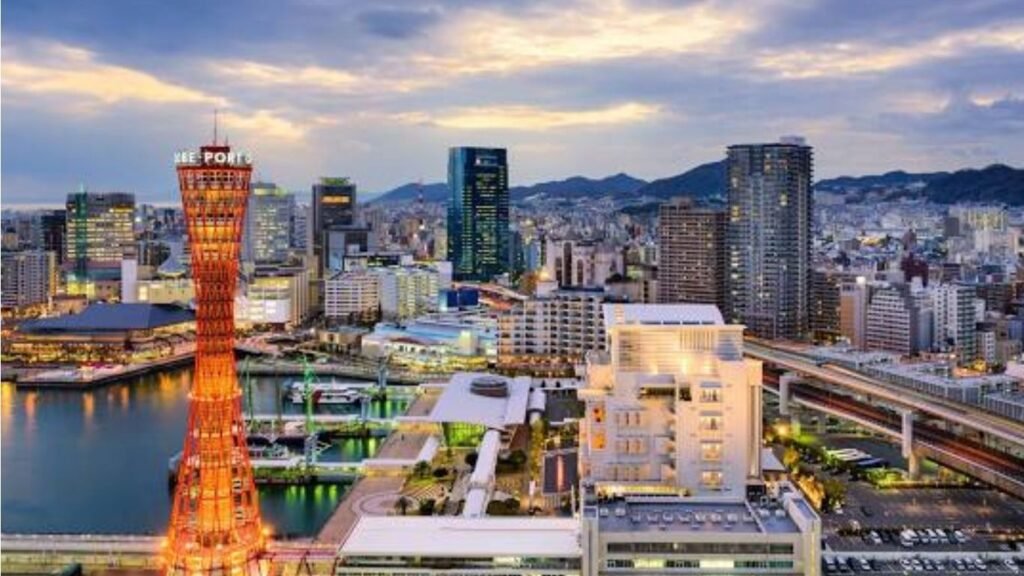
History and Culture
Nestled between the Rokko Mountains and Osaka Bay, Kobe is a cosmopolitan port city known for its international flair, resilience, and refined lifestyle. Opened to foreign trade in the late 19th century, Kobe quickly developed a unique blend of Japanese and Western cultures—reflected in its architecture, cuisine, and global communities. The city also carries a poignant history, having rebuilt itself after the devastating Great Hanshin Earthquake of 1995.
As one of the best cities to visit in Japan, Kobe offers elegant charm, multicultural sophistication, and scenic beauty in perfect harmony.
Must-See Attractions
Experience the culture and sophistication that make Kobe one of the best cities to visit in Japan:
- Kobe Harborland: A lively waterfront district with shopping, dining, and iconic views of Kobe Port Tower and the maritime museum.
- Ikuta Shrine: A historic Shinto shrine located in the heart of the city, with roots stretching back to the 3rd century.
- Kobe Nunobiki Herb Garden: Accessible by ropeway, this hillside garden features fragrant herbs, panoramic views, and seasonal blooms.
- Kitano-cho: A district of preserved Western-style homes built by early foreign merchants, now open as charming museums and cafés.
- Meriken Park: A modern bayfront park showcasing public art, the Earthquake Memorial, and peaceful seaside walks.
- Kobe Animal Kingdom: A family-friendly botanical zoo where visitors can interact closely with animals in indoor and outdoor enclosures.
- Kobe Chinatown (Nankinmachi): A bustling quarter filled with Chinese eateries, shops, and colorful street festivals.
- Arima Onsen: One of Japan’s oldest hot spring towns, nestled in nearby mountains and famed for its “gold” and “silver” mineral baths.
- Mt. Rokko: Offering hiking, ropeway access, and sweeping views of Kobe’s urban and coastal landscapes.
- Kobe Fashion Museum: Japan’s first museum dedicated to fashion, design, and global style trends.
Unique Experiences
| Experience Type | Description |
|---|---|
| Culinary Prestige | Savor world-famous Kobe beef prepared by expert teppanyaki chefs. |
| International Heritage | Explore 19th-century Western residences in Kitano and port history in Meriken Park. |
| Seaside Serenity | Enjoy yacht cruises or dine along the harbor with sunset views. |
| Onsen Relaxation | Unwind in Arima’s historic hot springs just a short ride from the city center. |
Best Time to Visit & Transportation
Kobe is one of the best cities to visit in Japan during spring and fall, when temperatures are pleasant and natural beauty is at its peak. Summer brings lively festivals like Kobe Matsuri, while winter lights up the city with the famous Luminarie light display.
The city is easily accessible via Shin-Kobe Station on the Shinkansen line and is served by Kobe Airport for domestic flights. An efficient network of trains, buses, and ropeways connects Kobe’s urban core with mountains, suburbs, and the sea—making every corner of the city effortlessly reachable.
FAQ: 10 Best Cities to Visit in Japan
What is the best time to visit the cities in Japan?
The best cities to visit in Japan can be enjoyed year-round, but spring (March–May) and autumn (September–November) offer the most pleasant weather and stunning natural scenery, especially during cherry blossom or fall foliage seasons.
Is it easy to travel between cities in Japan?
Yes. Japan’s world-class transportation system, especially the Shinkansen (bullet trains), makes intercity travel fast and efficient. Major cities like Tokyo, Kyoto, Osaka, and Nagoya are connected by high-speed rail, and regional lines cover more remote destinations.
How many cities should I include in a 2-week Japan itinerary?
For a two-week trip, it’s ideal to visit 4 to 6 of the best cities to visit in Japan. A common route includes Tokyo, Kyoto, Osaka, Hiroshima, and a regional destination like Sapporo or Fukuoka to diversify the experience.
Which city is best for traditional Japanese culture?
Kyoto is widely regarded as the cultural heart of Japan, with preserved temples, shrines, tea houses, and geisha districts. Nara is also excellent for early Japanese history and sacred Buddhist sites.
Are these cities beginner-friendly for travelers who don’t speak Japanese?
Absolutely. The best cities to visit in Japan are well-prepared for international visitors. English signage is common, major transport hubs are easy to navigate, and locals are helpful. Apps like Google Translate and Navitime also make communication and transit smooth.
What city is best for food lovers?
Osaka is considered Japan’s street food capital, while Fukuoka is famed for its ramen stalls, and Tokyo boasts the most Michelin-starred restaurants in the world. Every city on this list, however, has its own unique culinary specialties worth trying.
Do I need a rail pass to explore these cities?
If you plan to visit multiple cities within a week or more, the Japan Rail Pass (especially the 7- or 14-day version) offers excellent value. It covers most Shinkansen and regional JR trains between many of the best cities to visit in Japan.
